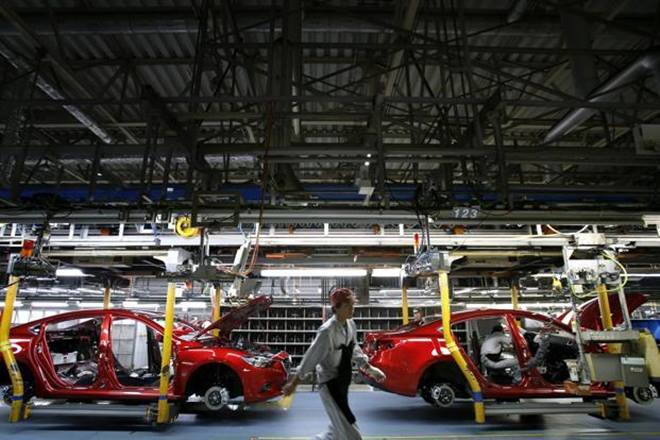Supply chains have been shattered by the coronavirus outbreak in the Chinese coastal province of Jiangsu, and hence one auto supplier has shifted production of parts for Mazda Motor Corp 13,000 km away to central Mexico’s Guanajuato. Japan’s bid to keep production lines moving comes at a high cost as it is already dealing with an expected downturn in consumer demand in markets such as the United States, China and Japan as the coronavirus crisis deepens.
The auto supplier that ships a component used in the exterior trim of the Mazda3 and CX-30 models has cranked up output of the part at its Mexico plant by 50% to deal with the Chinese shortage. The parts are airlifted to Mazda’s assembly line in Japan, a person at the supplier with direct knowledge of the matter told Reuters. In total, the move has cost Mazda more than $5 million, the person said, citing extra shifts and air freight charges.
“But Mazda doesn’t want to stop production and have asked us to keep our supply coming. They are taking on the expense.” A Mazda spokeswoman said the company was “assessing various countermeasures for swift recovery while minimising the impact on production at the same time”.
Although Mexico provided a solution for the Mazda supplier, the country is itself bracing for a supply crunch, with local officials warning that disruptions to parts shipments from China could deal a blow to its own auto manufacturing industry. Many Japanese suppliers also manufacture in the United States, Europe, and Asia.
As one of Japan’s smaller automakers, Mazda trails rivals Toyota Motor Corp and Nissan Motor Co in sales and production capacity. To keep costs down, it has for years focused on sharing as many parts as possible across its line-up. Relatively low volumes and the standardised design and production model also give Mazda and its suppliers more flexibility when considering options for shifting production, one Mazda insider said.
Larger automakers, which require higher volumes of parts and typically use a wider variety of components across their models, may, however, find themselves with fewer options. The Chinese vehicle sales of Japan’s top three automakers plunged by as much as 85% last month as demand in the world’s top car market took a pummelling from the virus outbreak, prompting China’s automaking association to call on the government for tax cuts and other measures to support sales.
Also read: FADA approaches Supreme Court again for BS4 sale extension as Coronavirus slows retail
Meanwhile, the output of LED headlights and taillights at Koito Manufacturing’s plant in China’s Hubei Province, the epicentre of the coronavirus outbreak, ground to a halt in February after the Chinese government ordered offices, schools and factories to close.
While partial operations resumed last week, the company, the world’s biggest maker of automotive lighting and a supplier to Toyota, Nissan, and others, is preparing to move some production elsewhere to fulfill export orders, a Koito spokeswoman said, adding it was discussing arrangements with clients.
Time and cost concerns mean other suppliers will be less keen to follow the example of Koito and the Mazda supplier, despite expectations that it will take months for manufacturing output in China to return to normal.
